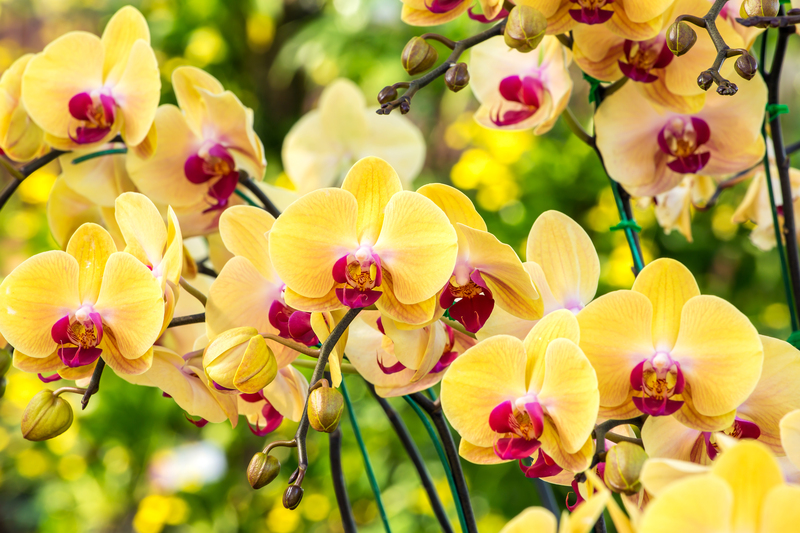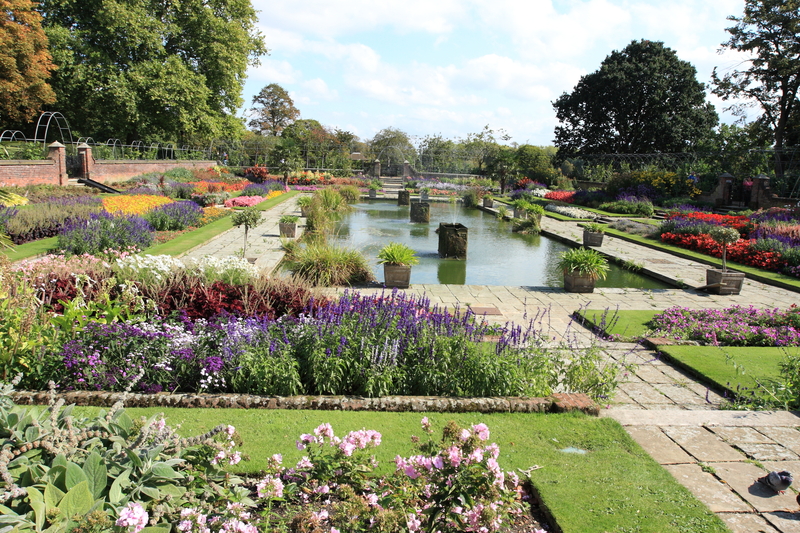Designing a Safe and Fun Outdoor Space for Kids
Posted on 23/08/2025
Designing a Safe and Fun Outdoor Space for Kids: The Ultimate Guide
Creating a safe and fun outdoor space for kids is one of the best investments families can make. Not only does it provide children with a secure place to play, but it also encourages physical activity, social interaction, and creativity. With the right design, your backyard or garden can become a lively, imaginative playground that grows with your children. In this comprehensive guide, we'll explore everything you need to know about designing an outdoor space that is both secure and entertaining for kids of all ages.
Why Outdoor Play Spaces Matter
Research consistently shows that outdoor play is essential for healthy childhood development. Children who spend time outside enjoy physical exercise, fresh air, and the chance to explore their natural environment. They also develop crucial social skills through unstructured play with siblings and friends. Here are some key benefits of an engaging and safe outdoor play area:
- Promotes physical health: Outdoor activity decreases the risk of obesity and strengthens bones and muscles.
- Encourages creativity: Open spaces and varied play equipment inspire imagination and innovation.
- Improves mental wellbeing: Nature reduces stress and improves mood in both kids and adults.
- Builds social skills: Cooperative play teaches communication, teamwork, and conflict resolution.

Planning Your Child-Friendly Outdoor Space
Before bringing your dream play area to life, thoughtful planning is essential. Not only do you want an outdoor space designed for children's interests, but it also needs to be safe, durable, and adaptable as your kids grow. Here's how to get started:
1. Assess Your Space
- Evaluate the Size: Measure your available outdoor space. Even small yards or patios can be transformed into exciting play zones with creative use of vertical elements or modular equipment.
- Observe Sun Patterns: Note which areas get the most sun and shade during the day. Install shade sails or use trees to protect sensitive skin from harsh midday rays.
- Identify Hazards: Inspect for rocks, sharp edges, thorny plants, and uneven terrain that could pose safety risks.
2. Set Priorities and Goals
- Age-appropriate features: The needs of a toddler differ from those of a pre-teen. Design a space that can evolve as your children get older.
- Balance play and relaxation: Include areas for active play as well as quiet, shady corners for reading or observing nature.
- Encourage independence: Choose equipment and layouts that allow children to safely explore and challenge themselves.
Critical Safety Considerations for Outdoor Playgrounds
When designing a child-safe outdoor play area, safety is paramount. According to the CDC, more than 200,000 children are treated in emergency departments each year for playground-related injuries in the U.S. To minimize risks and give parents peace of mind, follow these essential tips when creating your backyard playground:
1. Select Safe Surfacing Materials
- Avoid hard surfaces: Concrete, asphalt, or compacted soil can cause injuries from falls. Use soft, shock-absorbing materials like rubber mulch, engineered wood fiber, or sand beneath swings, slides, and climbing structures.
- Keep it level: Check for holes, roots, or rocks that could trip kids as they run and play.
2. Choose Safe Equipment
- Buy age-appropriate playsets: Look for equipment that's sized right for your children's ages and abilities.
- Look for certifications: Equipment should meet safety standards such as ASTM (American Society for Testing and Materials) or CPSC (Consumer Product Safety Commission).
- Check for small parts: Avoid items with sharp edges or small detachable pieces for younger children, since these can be choking hazards.
3. Provide Supervision and Visibility
- Keep play areas visible: Position play zones where you can easily watch your kids from inside the house or from outdoor seating.
- Fencing and gates: Enclose play areas with tall, secure fences to prevent children from wandering off and to keep pets away from the play space.
- Clear sightlines: Avoid placing tall shrubs or structures that may block your view of active children.
4. Manage Plants and Landscaping
- Avoid toxic plants: Many common garden plants are poisonous if eaten, such as oleander, foxglove, or lily of the valley.
- Prune shrubs: Keep bushes trimmed to eliminate low-hanging branches and prevent accidental injuries.
- Non-slip surfaces: Choose decking or paving with non-slip finishes to prevent falls, especially when wet.
Engaging and Fun Features for Your Outdoor Play Area
Once you've addressed safety, it's time to transform your yard into a child's paradise. Here are some imaginative ways to make your outdoor space fun and stimulating:
Classic Play Structures
- Swings and slides: Timeless favorites that entertain kids for hours. Modern designs include secure bucket swings for toddlers and slides with gentle slopes for younger children.
- Climbing walls and play forts: Encourage adventure and help develop coordination and strength.
- Sandbox: A simple sandbox provides countless creative play opportunities, from building castles to burying treasure.
Nature-Inspired Elements
- Wildflower patches: These attract butterflies and bees, offering hands-on nature learning and beautiful scenery.
- Log stepping stones: Arrange cut logs or flat stones for kids to practice balance and hopping skills.
- Mini vegetable gardens: Teaching children to plant and care for vegetables fosters responsibility and a love of healthy eating.
Creative and Sensory Play
- Chalkboard walls: Attach a chalkboard or paint a section of a fence for artistic, mess-free creativity.
- Musical instruments: Outdoor xylophones, drums, or chimes let children explore sound and rhythm.
- Water play: Install splash pads, water tables, or small fountains for cool fun on hot days--always supervise water play!
Zones for Imaginative Play
- Hideaways & tents: Teepees, garden sheds, or built-in nooks make perfect spots for secret meetings and pretend play.
- Pavement games: Use paint or mats to create hopscotch, tic-tac-toe, or mazes on patios or driveways.
Tips for Designing an Adaptable Outdoor Play Area
Kids grow up fast, and their interests shift just as quickly. With a little foresight, you can design a multi-age, flexible outdoor space that evolves with your family's needs:
- Modular equipment: Select playsets that can be modified, such as adding monkey bars or upgrading slides as kids grow.
- Removable features: Use lightweight, movable items like plastic playhouses, balls, or pop-up tents for easy reconfiguration.
- Open space: Leave some grassy zones unoccupied for soccer games, cartwheels, or stargazing at night.
- Seasonal updates: Change things up with new toys or playground decorations, such as themed flags or chalk art, to keep the space feeling fresh and exciting.
Low-Maintenance Landscaping for Safe and Fun Kids' Areas
A safe and enjoyable play space for kids doesn't have to mean extra yard work. Smart landscaping choices can reduce maintenance while looking beautiful year-round:
- Artificial turf: Consider high-quality, non-toxic artificial grass for mud-free, even, and cushioned play.
- Mulch and groundcover: Use bark chips, clover, or creeping thyme for low-maintenance surfaces that handle foot traffic.
- Native shrubs and perennials: Choose hardy, child-safe plants that thrive in your region and need little watering or pest control.
- Automatic irrigation: Keep lawns and plants healthy without manual watering, reducing tripping hazards from hoses.
Adding Comfort and Convenience: For Kids and Parents
A truly inviting outdoor space for children also considers the comfort of supervising adults. Here are some ideas:
- Seating: Benches, hammocks, or weatherproof chairs give adults a place to relax while keeping an eye on play.
- Outdoor storage: Keep toys, sports gear, and gardening tools tidy and safe with easy-access bins, chests, or sheds.
- Outdoor lighting: Solar garden lights or string lights let families enjoy the yard in the evening and help prevent accidents.
- Shade structures: Pergolas, umbrellas, or shade sails protect everyone from the sun and make the space usable all day.
Managing Common Outdoor Hazards
Even the best-designed child-friendly outdoor spaces require ongoing vigilance. Regular safety checks and a few extra precautions can help avoid accidents:
- Check for wear and tear: Inspect play equipment and surfaces routinely for cracks, loose bolts, or splinters.
- Discourage pets from the play zone: Use fencing or training to keep animal waste out of the children's area.
- Monitor water features: Always supervise children near water, no matter how shallow.
- Lock garden tools and chemicals: Store fertilizers, pesticides, and sharp tools securely out of children's reach.
Green and Sustainable Outdoor Play Space Ideas
An eco-friendly outdoor play area for children benefits both the environment and your family's health. Consider these green tips when designing your yard:
- Natural materials: Opt for wood, stone, or recycled plastic for play equipment and surfaces.
- Rainwater harvesting: Install rain barrels to provide water for gardens and water play features.
- Pollinator gardens: Plant native flowers and shrubs to support bees, butterflies, and local wildlife.
- Solar power: Use solar lights to illuminate your children's play area after sunset safely and sustainably.

Final Thoughts: The Joy of Outdoor Play
Designing a safe and fun outdoor space for kids is about more than just choosing the right play equipment. It's about creating an environment where children feel secure, inspired, and free to explore. With careful planning, smart safety measures, and a dash of creativity, your backyard or garden can become a cherished space where memories are made for years to come.
Start small, involve your children in the process, and remember that your own family traditions will make the space uniquely yours. Let the adventure begin!
Frequently Asked Questions (FAQs)
- What is the safest surface for a kids' play area?
Engineered wood fiber, rubber mulch, or quality artificial turf are excellent for fall absorption and injury prevention. - How can I keep my outdoor play area clean?
Choose low-maintenance materials, install outdoor storage for toys, and regularly check for hazards such as animal droppings, debris, and damaged equipment. - How do I make my play space inclusive?
Install accessible paths, consider sensory play features, and offer a variety of activities for children of different abilities.
Ready to design the ultimate outdoor space for your children? With these tips, your garden or backyard will soon be a hub for laughter, play, and happy childhood memories!

